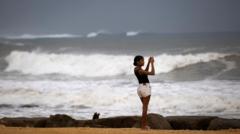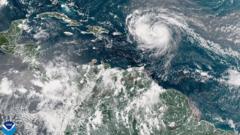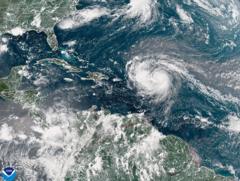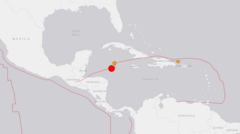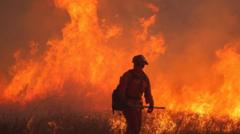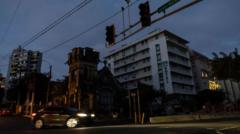SAN JUAN, Puerto Rico (AP) — In a startling contrast to seasonal norms, not a single named storm has formed in the Atlantic Ocean for nearly three weeks, even as we reach the peak of hurricane season.
Philip Klotzbach, a meteorologist from Colorado State University, sparked widespread curiosity when he posed the question on social media: “Where the heck are the Atlantic hurricanes?”
Tropical Storm Fernand was the last named storm of the season, forming on August 23 and quickly dissipating five days later over open waters.
This unusual calm period marks only the second time since modern records began in 1950 that no named storms have appeared during this historically active peak timeframe. Ernesto Rodríguez, a meteorologist with the National Weather Service in San Juan, emphasized, “Usually, conditions during this period are prime.”
Historically, the calmest peak season occurred in 1992, which followed the devastation of Hurricane Andrew in Florida.
Understanding the Silence
Experts cite three primary factors contributing to this year’s lull in hurricane activity:
- A strong vertical wind shear, which describes the variation in wind speed or direction with altitude, has increased due to a cyclonic circulation in the atmosphere.
- Persistent dry and stable air blankets much of the tropical Atlantic.
- A notable decrease in rainfall in West Africa, the region where tropical waves typically originate during hurricane season.
Rodríguez noted that this quiet could bode well for regions like Puerto Rico, which is still recovering from Hurricane Maria, a powerful Category 4 storm that struck the island in 2017.
Potential Storms Ahead
Despite the current tranquility, meteorologists warn that the season is far from over. Experts predict a possible uptick in storm activity in the latter half of September and early October.
Current forecasts indicate a cluster of systems over 600 miles east of the Caribbean that might develop into a named storm. Although its trajectory suggests it will shift away from land, it could form into a significant hurricane.
Another cluster is looming behind it, yet with only a 20% chance of developing.
Looking to Historical Patterns
Historically, 80% of hurricane activity occurs in August and September, yet only six named storms have emerged this season. Meteorological reports have flagged insufficient instability as a key hindrance to typical hurricane development this year.
The National Oceanic and Atmospheric Administration (NOAA) had predicted an above-normal hurricane season, with estimates of 13 to 18 named storms, including several major hurricanes. The year’s first hurricane, Erin, peaked at Category 5 in August without making landfall, but it has been quiet since.
As we reflect on this unusual season, meteorologists advise remaining vigilant, as the possibility of future storms still looms in this active season.




